Harmonic Light Healing Arts News
Please enjoy reading my news !
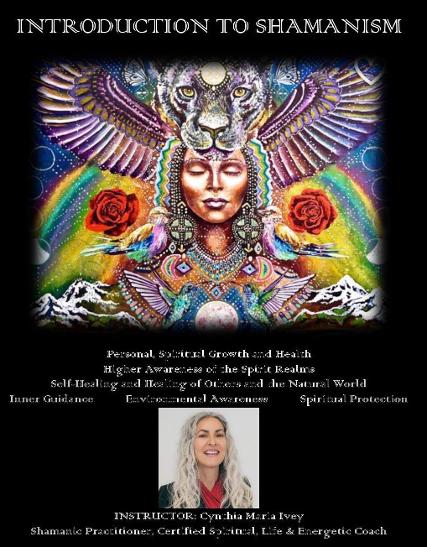
Introduction to Shamanism
I'm excited to announce that I have developed an introductory course on Shamanism and registration is now open!
In this course students will learn the history and basics of shamanism, how to connect with ordinary and non-ordinary reality, and how to start building your own Shamanic tool kit.
This course will facilitate greater personal, spiritual growth and health, higher awareness of the spirit realms, self healing and healing of others, and the natural world, inner guidance, environmental awareness, and spiritual protection.
This is a home-study course to enable students to complete the course on your own schedule.
The course also includes one on one phone coaching.
Texts and materials are included in course cost.
For more information, including class registration please message, email to cynthia.maria.ivey@gmail.com or call 1-800-965-8504
Pareidolia in a Cloud
I have a collection of pics I've taken of interesting clouds. This is one from a few years ago which I have edited it to make the details clearer. I immediately noticed a resemblance to the carving on Pacal Votan's sarcophagus lid from the Temple of Inscriptions at Palenque which I have been familiar with since I first saw when I was a child and was greatly impressed by the replica in The National Museum of Anthropology in Mexico City . Much has been said about what is actually going on in the carving - is Pacal Votan in a spacecraft, is he by the World Tree or is he being taken by a dragon to a celestial realm or by some being(s) to the underworld, or...? Do I just have a great imagination or do you think this cloud does echo the tomb lid?
Pareidolia is the tendency to perceive a specific, often meaningful image in a random or ambiguous visual pattern. The ability to experience pareidolia is more developed in some people than in others. The pareidolic images tend to indicate things about which we are most interested and to be connected to spiritual and religious images.

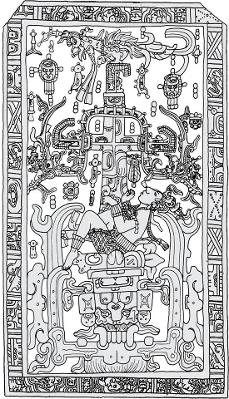

Holy Stones, Witch Stones, Fairy Stones, Hag Stones and Eye Stones
Holy Stones, also known as Witch Stones, Fairy Stones, Hag Stones and Eye Stones, are stones with naturally formed holes running through them. These stones are believed to have the power to guard their owner against negative energy and the Evil Eye. It was once common practice for people to hang these stones above the front door to their homes to keep misfortune and troublesome spirits away. Farmers used to nail them to stable doors to safeguard their livestock. Fishermen also used these stones as talismans to protect their boats from storms and as charms to help secure large catches of fish. Smaller hag stones have also been carried on key rings or worn around the neck in the belief that their wearers would be protected by them. They would also be hung on bed posts at night to ward off nightmares.
Teotihuacán
Here I am at my favorite sacred site of Teotihuacán in the mid 1970s. It was the most important and largest city of ancient Mesoamerica and is located about 30 miles northeast of Mexico City. The original name of the city is unknown because the origin and language of the Teotihuacanos are still unknown even after extensive research that continues to this day. The name Teotihuacán (The City of the Gods) was given by the Nahuatl-speaking Aztecs centuries after the fall of the city. It supported a population estimated at 125,000–200,000. The site covers a total surface area of 32 square miles and is the most visited archaeological site in Mexico.
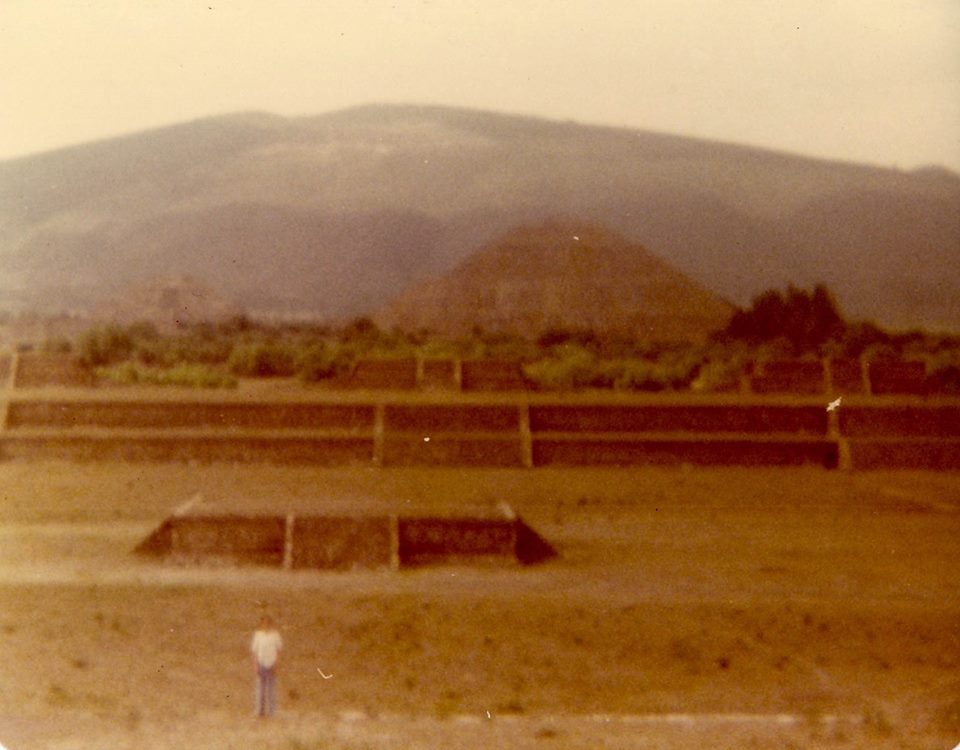
The Tarot de Marseille by Camoin and Jodorowsky
This is the tarot deck I use, and I use Jodorowsky’s approach to the tarot. Forms of cartomancy (fortune-telling or divination using a deck of cards) appeared in Europe in the 14th century. The tarot emerged in the 17th century, and the deck we’re all most familiar with,the Rider-Waite Tarot appeared in 1909. Alejandro Jodorowsky (Chilean-French filmmaker, novelist, actor, musician, philosopher, psychologist, artist and spiritual guru) spent over 10 yrs reconstructing the original form of the Tarot de Marseille, the deck from which subsequent tarot decks derive. Jodorowsky’s profound study of the Tarot reveals it to be a powerful instrument of self-knowledge and a representation of the structure of the soul. He sees the Tarot as a powerful tool for self-realization, creativity, and healing. “You must not talk about the future. The future is a con. The tarot is a language that talks about the present.” In this short video, Jodorowsky offers a deep interpretation of the tarot’s wisdom as a symbolic system, and a way of telling the present and harnessing the power of now.
Ho’oponopono
This is the modern term for the ancient South Pacific practice of forgiveness now practiced by Hawaiians and anyone who wants to take part in this beautiful healing tool. Although Indigenous Hawaiian healers practice a more extensive traditional version, anyone may follow the modern 4 step version. Ho’oponopono is a powerful tool for healing current or past relationships, you do not need to involve the other person, and you and the other person both receive the healing energy. In the 1970s, the kahuna (healing priestess) Morrnah Simeona adapted the traditional hoʻoponopono to the social realities of the modern day and said this, “If we can accept that we are the sum total of all past thoughts, emotions, words, deeds and actions and that our present lives and choices are colored or shaded by this memory bank of the past, then we begin to see how a process of correcting or setting aright can change our lives, our families and our society.”
First, think about / visualize the person that you want to heal your relationship with, then follow these 4 steps in your head or out loud, out loud is always better -
1. “I am Sorry” Apologize to them for everything. This helps to clear away the karmic or energetic patterns or ties that may have brought this situation into your life.
2. “Please Forgive Me” Allow yourself to feel that forgiveness has been granted to you.
3. “Thank You” Thank the person for forgiving you and for everything. Thank them for being a part of your life and for giving you this opportunity to heal this energy.
4. “I Love You” Send the person love and their soul, the part of them that is just like you.
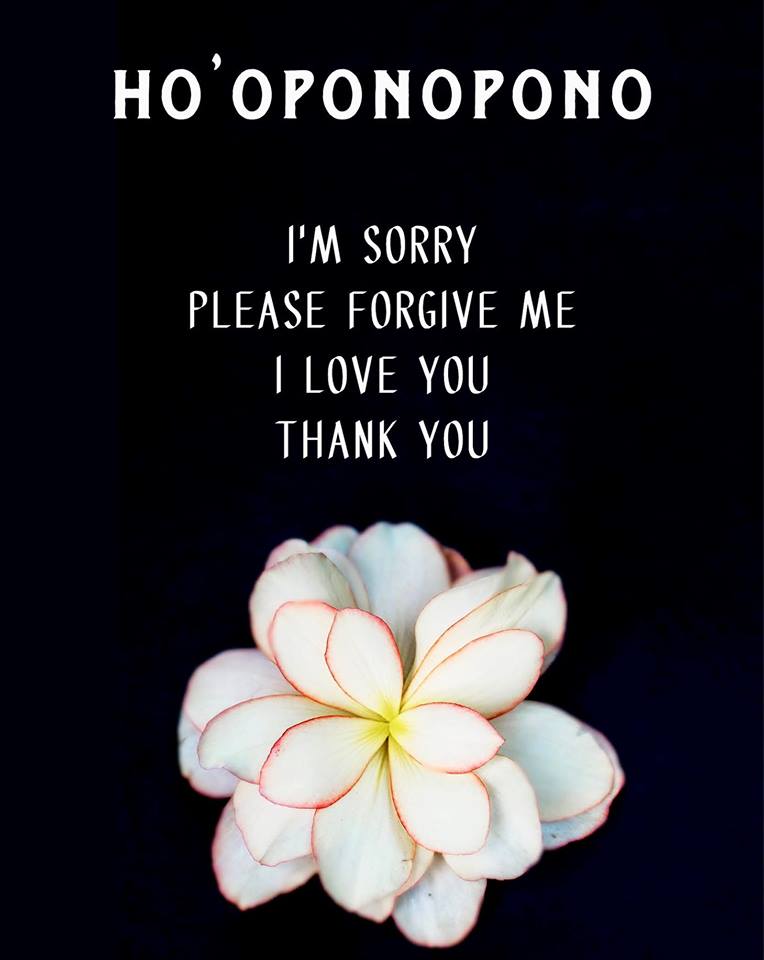
Día de los Muertos
Day of the Dead
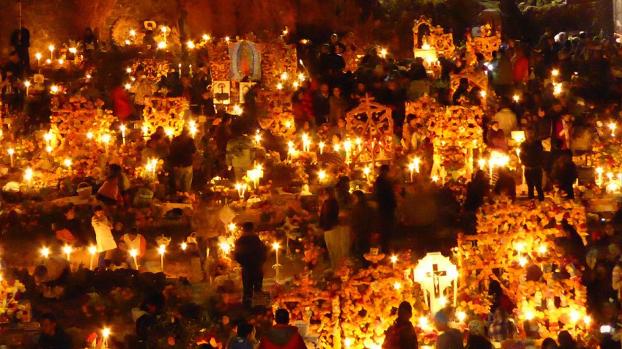
This is my favorite holiday, a time for me to remember my ancestors in a beautiful and loving way. Historians estimate the traditions and rituals associated with Día de los Muertos (Day of the Dead) date back 3,000 years to the indigenous cultures of Mexico. The Day of the Dead festivals and rituals originally took place in the ninth month of the Aztec calendar, which translates to about the beginning of August. These original festivities were celebrated for the entire month and were dedicated to the goddess Mictecacihuatl - the Lady of the Dead. In modern times this Lady of the Dead has come to be symbolized by the Catrina (the skeleton of a high society woman). The original month long festivities are now celebrated on the Catholic All Saints Day and All Souls Day at the beginning of November. November 1st, in most regions of Mexico, honors the passing of infants and children and is simply known as Día de los Inocentes (Day of the Innocents). November 2nd is when the passing of adults is celebrated and is known as Día de los Muertos (Day of the Dead). On these days, family members and friends travel to cemeteries to be with the souls of the deceased and pay homage to them with colorful alters, food, and beverage. To encourage visits from the souls of the deceased pictures and other items from the past are often used in these ceremonies. Family and friends may also tell stories, generally humorous or lighthearted. To accompany these traditions in the cemetery, many families build altars in their homes to pay homage to the deceased. These altars may have many of the same ofrendas ("offerings") that are found at the cemetery but may also include more permanent objects such as crosses, pictures of the Virgin of Guadalupe, candles, and Catrina or otherreligious figurines.
Copal - Pom
A variety of aromatic tree resins are referred to as copal, here I am referring to the resin from the copal tree of the torchwood family in Southern Mexico. The word copal is derived from the Nahuatl language word copalli, meaning "incense" and this incense is also known to the Maya as pom. Copal has been considered sacred since ancient times and is still used by indigenous peoples of Mexico and Central America during sacred ceremonies to strengthen peace of mind, remove energy blockages from the body, mind and soul, and to purify/cleanse objects. Copal offerings were made to the deities on pyramids and sacred burial grounds. It is burned year round in the churches, plazas and other public or private areas in Mexico. It is used in homes during the Days of the Dead because it is believed that the familiar scent of Copal helps the souls find their way back during their annual visit home. Shamans/shamanic practitioners use copal to assist with entering a trance and for divination and protection. It’s medicinal uses range from treating upper respiratory infections, skin infections/conditions, to plugging tooth cavities, as an expectorant, in the treatment of muscular aches and pains, as an anti-rheumatic, and as an antiseptic. Copal is my favorite incense, I burn it frequently, and as you can see in the photo of a “Limpia” here, people in Mexico still line up to be blessed and cleansed by this powerful resin.
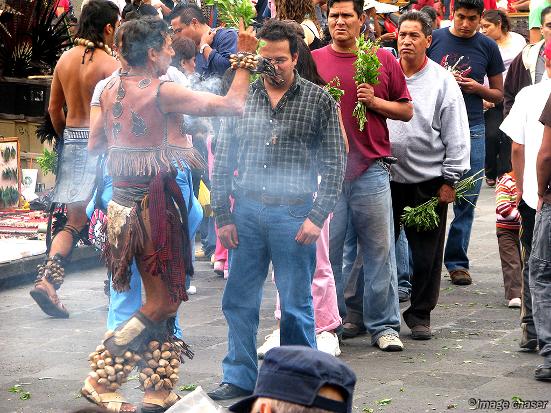
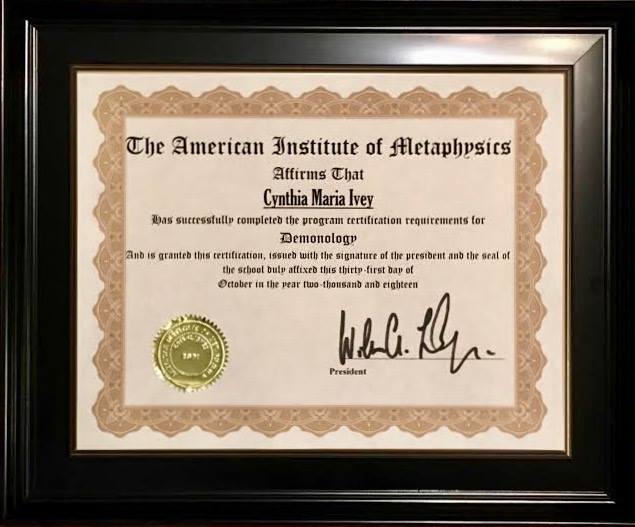
I am now Certified in Demonology!
I am very proud to announce that I obtained my certification in Demonology on October 31st from the American Institute of Metaphysics (link below)! This course has expanded my knowledge on this subject tremendously, I knew it would but it really surpassed my expectations! This course included historical, theological, scientific, and philosophical elements of Demonology. I highly recommend this certification if you are interested in learning more to help you understand your own experiences or to enhance your work in any related field!
Monte Albán, Oaxaca, Mexico
In this photo, I am at another one of my favorite sacred sites, Monte Albán. It is the most important archaeological site in Oaxaca, Mexico. Inhabited over a period of 1,500 years by a succession of peoples – Olmecs, Zapotecs and Mixtecs – the terraces, dams, canals, pyramids and artificial mounds of Monte Albán were carved out of the mountain and are the symbols of a sacred topography. The grand Zapotec capital flourished for thirteen centuries, from the year 500 B.C to 850 A.D. when, for reasons unknown, its eventual abandonment began. This site is known for the remains of magnificent temples and bas-reliefs with hieroglyphic inscriptions. But for me the most fascinating of finds at this site are the numerous trepanned skulls which were displayed in a small museum on the site, but are no longer there. Trepanation is a surgical procedure that involves forming a hole in the skull of a living person by either drilling, cutting or scraping away layers of bone with a sharp implement. Thousands of skulls bearing signs of trepanation have been unearthed at archaeological sites around the world but despite this, scientists are still not agreed on why our ancestors performed trepanation. "It's been done for about 5,000 years, making it one of the oldest medical procedures known to the human race," Dr. Raphael Davis, neurosurgeon. Trepanation was performed on young and old, male and female and could have been performed for physical or mental illnesses, head injuries, pain relief as it is today in some cases but the main reason for it’s popularity in our past remains a mystery. Some think the practice was used to expel evil spirits or for some other mystical / spiritual purpose. In the majority of cases, the person would survive and heal after the surgery. Researchers have found scarring from trepanation on skeletons, but the holes and injury to the skull had bone regrowth indicating the patient lived for years after the surgery. Unlike many trepanned skulls found at other sites, those at Monte Alban showed perfectly round holes. How the people at this site were able to cut with such precision without modern tools adds to the mystery.
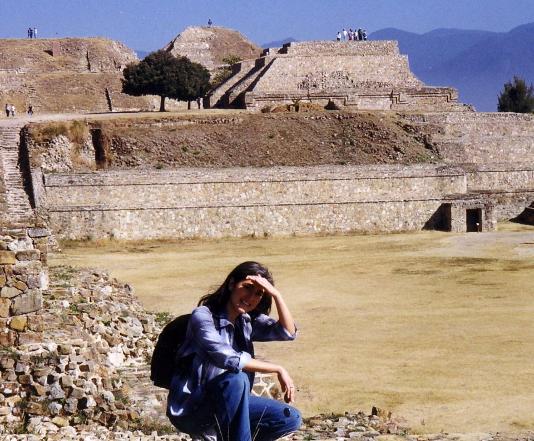



Chiron in Aries 2018-2027
Chiron will move into Aries after traveling through Pisces since early 2011. Chiron is at 29° of Pisces until it enters Aries on the 17th and completes it’s 50 year cycle. Chiron is entering Aries for the first time since it’s discovery in 1977, so this is our first collective experience having awareness of Chiron in Aries. Chiron symbolizes our experience of pain and woundedness, and is therefore connected to suffering. Aries rules the first house, the house of the self and brings fire, energy and action to the process of healing and transformation. Chiron in Aries will bring opportunities to heal our identity, our ego, our sense of self and the awareness of self-healing will increase. More people will choose to leave behind the old identification of the self and embrace a new identity and a new outlook on life. If you are born between 1969 and 1977 you have Chiron in Aries in your chart and will have your Chiron return. A Chiron return takes place around the age of 50 and is one of the major milestones in one’s life. It is associated with a healing crisis and you will become less concerned with the material world and more interested in spiritual pursuits. The chart below shows the dates of Chiron’s movement out of Pisces and into Aries. Chiron in Aries will ask us to address and heal – once and for all – the wound of identity, a wound that we are all born with.
The Akashic Records are a collection of mystical knowledge that are encoded on a non-physical plane of existence and are believed to have existed since the beginning of the time-space continuum. These Records are the energetic imprint of all experiences of all lifetimes in all realities, past, present and potentials for the future. Akasha is a Sanskrit term for space, aether or sky. Everyone can access information from the Akashic Records, sometimes it happens without consciously asking! The flashes of intuition, déjà vu or other premonitions that occur can be glimpses into the information contained in these Records. Everyone can access their own Akashic Records but we cannot access the Records of another without permission. In 2013 I completed my training in Spiritual Response Therapy or SRT. SRT is a spiritual healing technique that helps us remove negative soul programming from our Akashic Records. Any kind of work with our Akashic Records can be extremely valuable because they contain every thought, emotion, action, and experience that has ever occurred in time and space, therefore it offers specific information about our own soul’s journey.
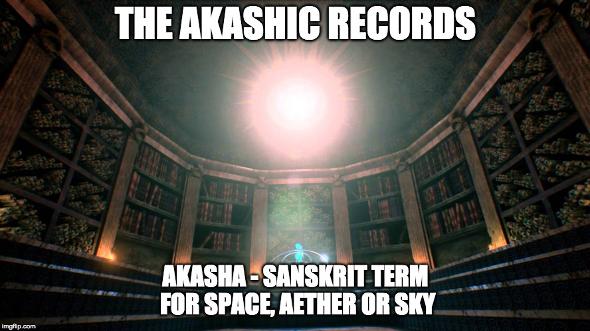
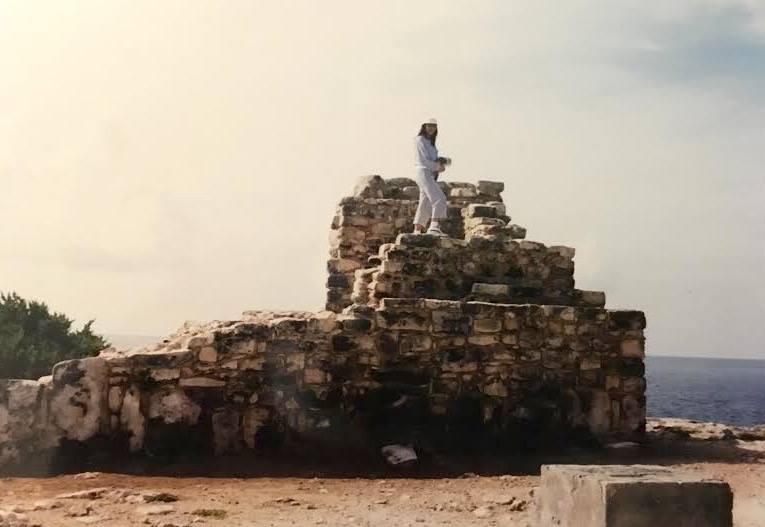
Mayan temple dedicated to the Goddess Ixchel on Isla Mujeres, Mexico
Here I am at the remains of a Mayan temple dedicated to Ixchel on southern tip of Isla Mujeres, Quintana Roo, Mexico sometime in the early '90s. Ixchel is the Mayan goddess of childbirth, fertility, the moon, healing and medicine. When the Spanish arrived they named it "Isla Mujeres" or "Island of Women" because of the many gold, silver and clay statues of Ixchel that were found on the island. This temple in on the highest spot of elevation in the Yucatan and as you can see has suffered extensive damage from hurricanes. Not much is now known about the history of this island or this temple but we do know that the island was considered sacred to the Mayans. It is believed that the only inhabitants of the island were the “priestesses” of Ixchel and her “court of women,” and that other Mayan women made a yearly pilgrimage to this temple.
Crystal Healing
Ancient Egyptians, Sumerians, Indians, Chinese, and most if not all cultures around the world used crystals, stones, minerals and organic materials such as amber, jet, bones, etc. to enhance emotional, physical and spiritual health. Pieces of quartz have even been found in Neanderthal remains and at megalithic sites. All you really need to work with crystals are the intention and the desire. Each crystal has a pre-programmed energy and as you state your intention while holding the crystal, you can connect your intention to the inherent qualities of the crystal to further activate it. Of course it is best to find the right stone for your intention but it doesn’t always work that way, sometimes a crystal picks you! There are many ways to use stones; carry one in your pocket to block negative energies, place crystals around your plants to aid growth, put one next to your computer to diffuse the electromagnetic energy, keep one on your desk to inspire you, wear one as an amulet to protect you, place a crystal in areas of your home to create harmony, use one to meditate with, or make a crystal grid to combine their energies as in the photo on the right. You are reading this right now on an LCD screen (liquid crystal display) powered by a processor chip made of silicon. Crystals are essential to the functioning of our modern technologies because of the way their balanced, ordered structure emits consistent frequencies and allows them to store a tremendous amount of information. Crystals are some of the most powerful and intriguing materials on this planet. It is a good idea to clean your stones from time to time. You can do that with water, the moon, the sun, smoke from incense, or burying them in the earth overnight. Amethyst, rose quartz, celestite, moonstone, obsidian and good ol’ quartz are some of my favorites.
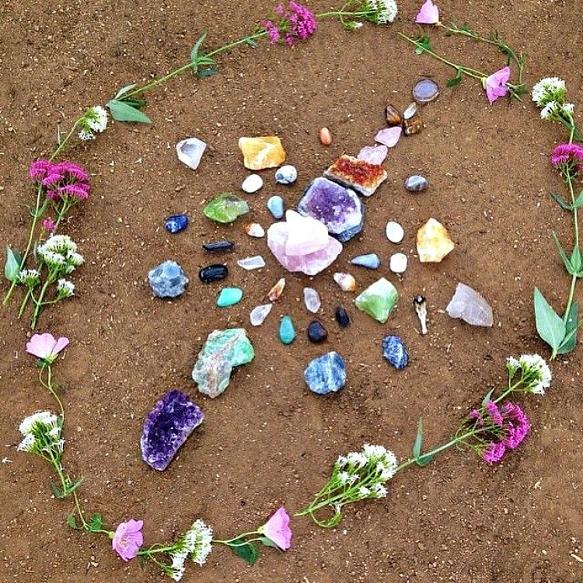

Grounding/Earthing
Grounding/Earthing, whether through literal or meditative means has powerful emotional, spiritual and physical benefits! Have you ever wondered why you feel so much better after walking barefoot on the beach? The earth’s tremendous negative charge is a potent antioxidant which can relieve pain, reduce inflammation, improve sleep, enhance well being, and so much more. You can buy grounding devices or stand/walk barefoot on the earth (it’s better if it’s wet/damp) or do a grounding visualization. You can also wear cotton clothing, eat root veggies, wash your clothes with baking soda, humidify the air in your home, touch/use something grounded like crystals (hematite, obsidian) and essential oils (sandalwood, cinnamon bark), are just a few other ways to get more grounded. I love to lead my clients through a grounding visualization, it’s super relaxing and something anyone can easily do on their own!
Reiki
Reiki is difficult to explain, the word Reiki is difficult to translate and I would still like to try to do so here. Reiki is a Japanese technique that is used to heal physical and mental trauma, and to support mental clarity and spiritual well-being. Reiki can be defined as a “non-physical healing energy made up of life force energy that is guided by the Higher Intelligence.” The Reiki practitioner acts as a conduit for this energy which flows where it is needed in the client and creates the healing conditions necessary for each individual. It cannot be purposely guided by the mind and cannot be misused. Reiki is not used to detect or diagnose and is not attached to any religion or any belief system. It can be performed in person or at a distance. The Reiki symbols below act as a kind of bridge, connecting the practitioner to certain vibrational states which are tuned to specific uses such as physical power, emotional purification, distance healing and passing attunements.
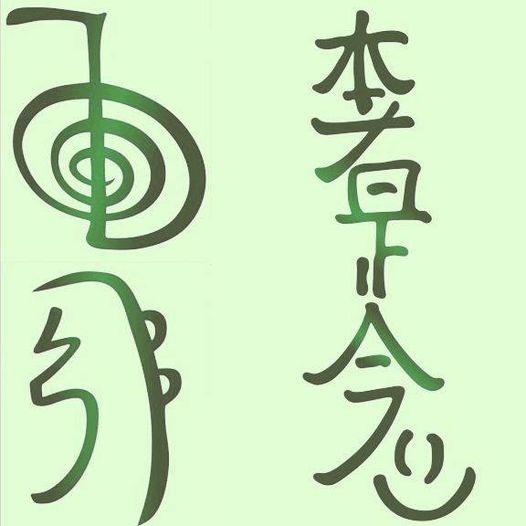
Wonderful article about Soul Retrieval by Sandra Ingerman
Shamanism is the oldest spiritual practice known to humankind. We know from the archaeological evidence that shamanism was practiced all over the world for at least 40,000 years. However many anthropologists believe that the practice dates back over 100,000 years.
The word shaman comes from the Tungus tribe in Siberia and means “one who sees in the dark”. Shamanism has been practiced in parts of Asia, Europe, Africa, Australia, Greenland, and Native North and South America.
A shaman is a man or woman who interacts directly with spirits to address the spiritual aspects of illness, perform soul retrievals, divine information, help the spirits of deceased people cross over, and perform a variety of ceremonies for the community. Shamans have taken on many roles in tribal communities. They have acted as healers, doctors, priests, psychotherapists, mystics, and storytellers.
Shamans look at the spiritual form of illness which might manifest on an emotional or physical level. When I was doing the research for my book Soul Retrieval: Mending the Fragmented Self I found that most shamanic cultures around the world believe that illness is due to the loss of the soul.
It is believed that whenever we suffer an emotional or physical trauma a part of our soul flees the body in order to survive the experience. The definition of soul that I am using is soul is our essence, life force, the part of our vitality that keeps us alive and thriving.
The types of trauma that could cause soul loss in our culture would be any kind of abuse sexual, physical, or emotional. Other causes could be an accident, being in a war, being a victim of a terrorist act, acting against our morals, being in a natural disaster (a fire, hurricane, earthquake, tornado, etc.), surgery, addictions, divorce, or death of a loved one.
Any event that causes shock could cause soul loss. And what might cause soul loss in one person might not cause soul loss in another.
It is important to understand that soul loss is a good thing that happens to us. It is how we survive pain. If I was going to be in a head on car collision the last place that I would want to be at the point of impact is in my body. My psyche could not endure that kind of pain. So our psyches have this brilliant self protect mechanism where a part of our essence or soul leaves the body so that we do not feel the full impact of the pain.
In psychology we call this disassociation. But in psychology we don’t talk about what disassociates and where that part goes. In shamanism we understand that a piece of the soul leaves the body and goes to a territory in what shamans call non ordinary reality where it waits until someone intervenes in the spiritual realms and facilitates its return.
Although soul loss is a survival mechanism the problem from a shamanic point of view is that the soul part that left usually does not come back on its own. The soul might be lost, or stolen by another person, or doesn’t know the trauma has passed and it is safe to return.
It has always been the role of the shaman to go into an altered state of consciousness and track down where the soul fled to in the alternate realities and return it to the body of the client.
There are many common symptoms of soul loss. Some of the more common ones would be dissociation where a person does not feel fully in his or her body and alive and fully engaged in life. Other symptoms include chronic depression, suicidal tendencies, post traumatic stress syndrome, immune deficiency problems, and grief that just does not heal. Addictions are also a sign of soul loss as we seek external sources to fill up the empty spaces inside of us whether through substances, food, relationships, work, or buying material objects.
Anytime someone says I have never been the same since a certain event and they don’t mean this in a good way soul loss has probably occurred.
You can really see how much soul loss there is today as we put money over life. Anytime someone says that we have to kill other life forms for material gain that person must be suffering from soul loss. Anytime someone feels that buying one more car or that gathering material objects will bring happiness that person is suffering from the loss of soul. As you can see we are looking at a great deal of planetary soul loss today as you watch how we behave towards each other and the rest of life.
Coma is also soul loss. But in coma there is more of the soul out of body than in the body. Coma is very complicated to work with today for many reasons. It takes skill on behalf of the shaman to find out which way the soul is trying to go. Does the soul want to reenter the body or does it need help transcending which would lead to the death of the patient? There is a lot to say about this topic and it beyond the scope of this article.
Today there has been a resurgence in the interest of the practice of shamanism. We now have many hundreds of wonderful shamanic practitioners reintroducing the practice of soul retrievals into our culture.
It is interesting to note that as soul loss was so understood in shamanic cultures people who suffered traumas were given a soul retrieval within three days after a trauma occurred.
Today as we have not been practicing soul retrieval modern day practitioners are going back ten, twenty, thirty, or forty years or even more looking for lost soul parts.
Also in a shamanic culture the individuals knew what was out of balance in their lives that might have caused an illness or issue to occur.
In our culture we are unaware of what is out of spiritual harmony that is creating illness. And because often our soul loss happened so young we are unaware of the unconscious patterns we are living out due to our first experience of soul loss. We are always trying to retrieve our soul. And how we do this is by repeating the same trauma over and over again. The names might change of the people involved in our life story, but the story is often the same.
Continued in next column >
The effects of having a soul retrieval vary person to person. Some people feel that they are more grounded in their body and feel more solid. Some people feel lighter and a joyful way of being returns to them. For some memories of the past traumas might be triggered bringing up a variety of feelings that must be worked through. And for some people the effects are too subtle to notice a change until further work to integrate the soul is done.
As people feel more present in their bodies and in the world they become more conscious of behavior that might be out of balance and disharmonious. When we are numb we might be aware that things in the world are not right but we can easily distract ourselves from feeling a need to change. When we are fully “inspirited” there is no place to retreat to and we are more inspired to change our lives.
Over the years I have changed how I work with clients and teach the work. In 1997 I had added an Author’s Note to my book Soul Retrieval: Mending the Fragmented Self. The evolution of the work had a lot to do with how consciousness has been changing in our culture. Many people had become stuck in the stories about the traumas of their past and it became necessary to help people create new stories for their present and future life.
The emphasis of my work with clients included sharing stories of the gifts, talents and strengths that would be available with the return of the soul. For the soul parts leave because of a trauma taking gifts and strengths with them such as how to love, trust, be creative, be joyful, etc.
As people today do not need more bad news I found myself emphasizing the beauty that returned and inspiring stories about the joyful life the client can now create in being whole again.
Based on new technology available to us today it is possible to map the brain. And through brain mapping we now know that the brain has great potential to create new neural pathways and create new forms of behavior.
In keeping with the need to evolve the work as the culture we live in changes, we want to support the client’s abilities to create new healthier and joyous life patterns rather than recreate the traumas and dramas of the past.
As I already wrote in the 1990’s I started to help client’s create new neural pathways by sharing healing stories that were filled with inspiring words of the gifts returned to them with the soul retrieval. In introducing new possibilities the brain begins to create new neural pathways to support change.
A few years later I changed my work with clients once again and started teaching soul retrieval in a new way.
In 2006 I wrote a new Afterword for Soul Retrieval. And in the Afterword I go into detail about some of the brain research and how I shifted my work.
When we talk about soul we are really talking about light. In returning the soul parts and lost vitality to the client we are really returning light. Previously in my book I had stressed the need for clients to receive the soul parts back. Now I stress the need for the client to fully absorb the light from the returned soul/essence into every cell of the body.
The first step is to help the client come up with a metaphor that will help them to absorb the light of the returned essence. It is crucial that the client come up with the metaphor that will work for them. Some examples I share are a dry sponge that has been put in water and how it absorbs the water. A flower that has been in the rain too long and then the sun comes out and the flower soaks in the light and warmth of the sun. Or maybe the reverse where a flower is growing in an area suffering from drought. And on the day the rain comes the flower soaks in the water. Another example I give is of a darkened room and the curtains are opened flooding the room with light. These are just a few examples that I share and then let the client think about a metaphor they can relate to.
The instruction I then give is for the client to focus on this metaphor as I blow the returned essence back into them. I ask clients to put their hands on their belly and breathe deeply as they experience themselves absorbing the light of their soul.
I wait to share the story of what I saw in the journey. For to share the story right after blowing the soul into the body moves the client’s energy from his body into his head.
I continue to ask the client to breathe and absorb the light of the soul into every cell of the body while I play a variety of instruments over the client. I use rattling, very light drumming, Tibetan bowls, bells, and singing for about 20 minutes while the client has the opportunity to absorb into every cell the light of his soul.
Then I share my healing story focusing on the gifts and strengths that have been returned.
Since I have started working and teaching in this way the positive changes in the results of the work have increased exponentially.
I believe that once a person has his or her soul brought back the client now has to do some work. If the person has done a lot of personal work the soul retrieval might be the end of the work. If not the soul retrieval would be the beginning of the work.
Now it is up to the client to look at how to create a healthy life style and attract healthy relationships that will support wholeness and a life filled with healing. How do we want to use the energy that was returned from the soul retrieval and our returned vitality to create a positive present and future for ourselves? And how do we bring passion and meaning back into our lives again so that we thrive instead of just survive? All these issues I call “life after healing” and are crucial to create long term healing after a soul retrieval.
I write about spiritual practices we can bring into our lives to create a positive present in future in my books Welcome Home: Following Your Soul’s Journey Home and Medicine for the Earth: How to Transform Personal and Environmental Toxins.
This is vital work for the times we live in. The earth wants her children home and she wants them home now. It is time to come back home again and take our rightful place on the earth. It is our birthright to fully express our soul and create the world we want to live in. And it is our birthright to shine as brightly as the stars above us. It is time to share our light again in the world.
Shamanic Healing: What Is Shamanism And How Can It Heal You?
Shamanism is the most ancient spiritual and healing practice known to man. In fact, shamanism and shamanic healing date back to over 100,000 years and have been practiced all across the globe — well before our current technologies of communication were possible.
How is it that the idea of shamanic healing has been so present and prominent throughout our world history? There must be something to it.
This article will cover the basics one needs to know about what shamanism is and how it works to heal our emotional, mental, physical, and spiritual bodies. It will do this by answering the following questions:
• What is shamanism?
• What is a shamanic journey?
• How do shamans perceive illness?
• What is shamanic healing?
• Is shamanic healing right for you?
• How does one find the right shaman?
What Is Shamanism?
Shamanism organically arose all over the world, all throughout history, as a response to the needs of people. Shamanism is an ancient collection of traditions based on the act of voluntarily accessing and connecting to non-ordinary states — or spirit realms — for wisdom and healing.
The word “shaman” comes from the Siberian Tungus tribe, and it directly means “spiritual healer,” or, more cleverly, “one who sees in the dark.”
Generally, there is one shaman per community. These shamans access the spirit realm for the purpose of individual and communal growth and healing — they do this by restoring and removing energetic pathways, recovering soul parts, and communicating with non-physical helpers to discover the spiritual aspects of illness and find answers to life’s seemingly impossible questions. This reality-penetrating ability marks them as the world’s very first doctors, storytellers, mystics, and even psychotherapists.
Shamanism comes with a great responsibility. Alongside simply accessing these worlds, they must posses the ability to transform what they have learned and experienced into concrete change in the physical world.
This capacity to apply wisdom from the spirit realm in order to heal and transform the physical realm is what differentiates shamans from other “spiritual travelers.” For example, a medium can access these realms, but they lack the physical action while there. As well, a sorcerer may take action in an altered state, but their focus is generally not upon healing.
Shamans also act as great teachers, for they teach that everything is spirited; that all things are interconnected and alive, including (but certainly not limited to) the Earth itself, the stars in the sky, and even the wind in the air. For this, it is also the shaman’s role in a community to demonstrate and maintain the harmonious balance of humankind, nature, and spirit.
Although shamans in some ways may act as teachers, many shamanic healers do not consider shamanism to be a religion. They feel this way because, within shamanism, there are no dogmas, no sacred text, and no single founder or leader. While individuals of religious practices may practice shamanism, not all shamans are part of an organized religion.
How does a person become a Shaman?
All of this talk about shamanic abilities begs the question: how does one become a shaman? The answer is not entirely simple, as shamanism has taken on a variety of forms across time and space. Below, however, are a few different examples of how one may become a shaman.
By Birth
In many tribes, it is said that Spirit chose to incarnate itself as a shaman before it was even born into physical existence. For that, a shaman is known by the spiritual elders of a tribe as, or sometimes even before, he/she is born. As well, it is said that shamanic ability may also be passed down ancestrally. The young shaman will then grow to be guided and trained by an elder shaman.
By Initiation
In other cultures, prospective shamans must undergo what is known as “shamanic initiation.” This can happen through courageously enduring terrifying circumstances and not only face, but resolve, all of their fears — a real shaman will demonstrate immense strength and healing in this process.
As well, Shamanic initiations can happen during trances, dreams, or out-of-body experiences. During these non-physical experiences, they are granted a spirit guide and subsequently undergo “spiritual surgery,” where they are completely dismembered, bone by bone, and reassembled as a newly born shaman.
By Calling
When an individual has a very serious illness — or near death experience of any kind — and are visited by spirits (and sometimes even ghosts of their ancestors), they are said to have a “shamanic calling.” They can become shamans from these experiences because they are said to have known death, returned from it, and thus, have a secret of life not attained by others.
As well, some cultures, such as the Greeks, highly regard being struck by lightning as a supreme calling, as the lightening possesses magical powers of the sky.
What are the special abilities of Shamans?
A person can enter into the field of shamanism, when — and only when — they have obtained these special shamanic abilities:
• The ability to voluntarily enter altered states of consciousness and maintain full control while maneuvering in and out of those various states.
• The ability to be a mediator between worlds. They must be able to articulate the needs and wisdom of the spirit world to the physical world, and vice versa. These needs and teachings must not only be understood by the community as a whole, but also facilitated.
• The ability to create and maintain balance of humankind, nature, and the spirit realm.
What Is A Shamanic Journey?
That invisible and mysterious place outside of time and physical reality (as we know it), has been referred to and looked at in many different ways: The Spirit Realm (as it has been referred to in this article), Non-Ordinary Reality, The Parallel Universe, The Other World (Celtic traditions), Dreamtime (Australian aborigines), and countless others. However this spiritual place is perceived and named, it is precisely where shamans go during their shamanic journeys.
A shamanic journey is always performed in a ceremonial context, as these realms are not to be taken lightly. Shamans enter these altered states of consciousness in order to communicate and connect with helping spirits to retrieve information; the information attained is generally brought back for healing purposes.
How to embark on a Shamanic Journey
Helping Spirits
During shamanic journeys, there exist a variety of helping spirits; these spirits come in the form of either spirit guides (humanoid beings) or power animals (also plants and insectoids) — they take on these familiar-looking forms in order to better relate with us. Helping spirits guide shamans and spirit travelers through these other worlds and assist them in healing individuals, the community, and the planet.
Power Animals
Power animals play a key role in the shamanic practice. According to shamanic wisdom, every person is born with the spirit of one or more animal. Animal spirits remain with us throughout our lives and help to guide and protect us. They are highly akin to the Christian concept of a Guardian Angel, and are essential guides to any venture undertaken by a shaman.
As well, power animals graciously lend their wisdom and attributes. For example, a Jaguar can teach one to walk fearlessly in the darkness and to pave the path in the midst of chaos. For that, as one moves through life, they can lose old and acquire new power animals, depending on where they currently need guided; it is also quite common for a single individual to have more than one power animal.
Spirit Guides
Spirit guides tend to come forth in these altered states in human, or humanoid, form. They help to guide shamans and spirit travelers through unfamiliar realms with ease and comfort — they establish a bond and are very trusted. A spirit guide is a teacher, a protector, and also a companion (some shamans even form a spiritual marriage with their spirit guides). These guides are oftentimes the gods and goddesses of the community, as well as ancestors wishing to help.
Not only do these spirits work with the shamans for the purpose of healing, they also provide wisdom when and where it is needed. Shamans sign a kind of spiritual contract with these spirit guides: “When I call, Spirit listens. When Spirit calls, I listen.”
Communication between Shamans and Helping Spirits
The communication between shaman and spirit is most commonly not as one would expect it to be. More often than not, these spirits of non-ordinary realms communicate with us in non-ordinary ways...
Generally, verbal communication does not occur — this is because verbal communication only needs to happen between two separate beings: one individual has an idea and would like to communicate it to another individual. However, in these higher states, separateness dissolves, and thus does the need for verbal communication. The shaman and the spirit are of the same, so the communication between the two can occur simply as a knowing.
-Continued on next column.
How Do Shamans Perceive Illness?
With life, there is suffering in the form of illness. We believe that is it microbes, viruses, bacteria, and injuries that cause our physical bodies illness. In the same respect, we believe that it is primarily an imbalance of brain chemistry that causes mental and emotional illness, such as depression, addiction, and so on.
Shamans, on the other hand, perceive these as the effects. They believe that, for true healing, one cannot simply mask and suppress these effects, or symptoms, with medication — they believe that we must address the root cause. The root cause is something far beyond viruses, bacteria, and brain chemistry; the root cause comes from the internal, non-physical realm: the spirit.
The 3 Causes of illness
From a shamanistic perspective, there are 3 classic causes of mental, emotional, and physical illness:
Disharmony (or Power Loss)
Disharmony, or power loss, oftentimes occurs when someone has lost an important connection to life, or when life seems to lose it’s meaning. This can happen either subtly or catastrophically; either way, we experience a loss of livelihood and meaning, and experience disempowerment in the process. This loss of will, or life power, strongly and directly affects our energetic matrix, and can cause us to become quite vulnerable to illness.
A common, yet tragic, example of this is when there is an elderly couple who have spent most of their lives together and one of them dies. The survivor oftentimes goes into a life crisis upon the loss and, shortly after, incurs an illness (such as cancer) and dies — that’s disharmony.
Fear
Fear is the most common cause of illness. Fear is responsible for emotions such as anxiety, stress, anger, jealousy, etc. Scientists and researchers also heavily agree that when these stress-producing hormones are present, they quickly begin to disintegrate the protective mantle of the body's immune system, as well as it’s overall energetic matrix. Illness, as a result, is inevitable.
Half a century ago, the Renaissance physician, Paracelsus, honorably noted that "the fear of disease is more dangerous than the disease itself." Shaman’s would surely agree with Paracelsus’ findings.
Soul Loss
Soul loss is the most extreme — yet, sadly, still common — cause of illness; in fact, it is the most serious diagnosis and a major cause of severe illness and even premature death.
Soul loss is most often experienced after a traumatic experience takes place, such as fighting in a war (an all-too-common trigger of PTSD), a bitter divorce, or intense bullying. In some cases, these experiences can be so shattering that one’s soul can begin to fragment and dissociate. In the most extreme and overwhelming cases, these soul parts get too far lost and fail to return.
We have heard people say things like, “I have not been the same since the incident,” or “a part of me died that day.” These remarks are red flags for soul loss. As well, the following symptoms are also commonly present:
• Feeling "not all here," or fragmented
• Blocked memory
• Emotional distance, or complete apathy
• A lack of joy, motivation, or enthusiasm
• Addiction
• Suicidal tendencies
• Chronic depression and negativity
This all may seem a bit heavy, that’s okay. The point of all this talk about suffering is to enlighten about possible healing methods — not the traditional pill-form “healing” methods that only mask the symptoms, but real healing methods that nurture and mend the root of the problem: the wounded spirit.
What Is Shamanic Healing?
In the shamanic perspective, true healing — spiritual healing — cannot be done on a physical level. Healing means to return to wholeness, and returning to wholeness is purely an inside job. Spiritual healing addresses the root — the spiritual — problems that cause dis-ease.
It is important to note that shamans believe that despite their great accessibility to the spirit realm, all healing is self-healing. A shamanic healer knows how to move and manipulate the energy of another’s body and can pass wisdom through from the spirit realm, but true healing must take place inside the spirit of the individual.
In other words, a person must be willing and ready to take full responsibility for his or her own healing— there is no magic pill that lies outside of one’s spiritual body. A shaman can be an outstanding tutor, but will not give all of the answers. It is also important to note that shamanic healing is not to be a substitute for conventional medical or psychological services, but is to instead be worked with adjunct to.
All of that being said, there are two main types of shamanic healing practices: a shamanic healing session, and a shamanic plant medicine healing ceremony. The main difference between these two types of healing is that in the latter healing practice, the clients goes on a journey with the shaman.
Shamanic Healing Sessions
Albeit an ancient practice, an increasing number of people are currently turning to shamans to support their well-being. As shamanic healers exist in nearly all cultures, their exact customs may vary, but the essence of what they do remains the same. They act as a sort of “hollow bone,” or an intermediary, by merging with the spirit realm and connecting with helping spirits to channel energies and wisdom in order to aid in healing within individuals on this dimension.
The helping spirits of the shamans are able to diagnose the cause (since they are spirit, they can easily see all that is happening on the spiritual level) of an illness, give insight, and then help to facilitate the required treatment for healing. For that, during a shamanic healing ceremony, the shaman must go on a shamanic journey to retrieve this energy and information — that is the core of a healing session. As well, many shamans will perform a bit of energy work in order to integrate the effects of the journey, locate, and release blockages, and increase the body’s ability to heal.
Is Shamanic Healing Right For You?
Below are characteristics of someone who may want to explore shamanic healing:
• Possesses a strong desire to create more meaningful relationships with oneself, others, nature, and the spirit world;
• Is ready to move forward beyond old thought patterns, limiting belief systems, and unhealthy habits that no longer serve them;
• Is ready to dig deep down and willing to seek genuine self-inquiry into order to move into a greater self;
• Wants to create real, positive, and lasting change within themselves but feels somehow "blocked" and wishes for guidance on how to move forward;
• If one chooses the plant medicine route, they are willing and able to fully surrender to the experience and trust that they will be guided to exactly where they need to be;
• Is willing to put forth the effort needed to fully integrate new wisdom and healing;
• Is patient and willing to take the time that may be needed to heal.
If you believe that shamanic healing may be the answer you’ve been searching for, the final section may be of good use.
How Does One Find The Right Shaman?
Shamans are people. For that, just like anyone else, they come in all shapes, sizes, attitudes, and flavors. In order for one to find the right shaman, it is advised to follow these guidelines:
Methods and Specialties
Just as all shamans have their own unique preference and style of healing, every person who seeks healing has their own preferences, as well. For that, there is a lot of beauty to be found in the vast variety of shamans and their various methods of healing — one shaman may be perfect for one person but not-so-great for another.
Some shamans work a lot with stones and crystals, while others focus on rhythm and chanting. Some shamans personally train clients to embark on their own shamanic journeys, and others journey alone. Some work one-on-one, while others work in a group setting. There are also shamans who specialize in specific fields such as addictions, PTSD, soul-retrieval, and energy balance.
Qualities
It is of great importance to note that although someone has the title of “shaman,” this does not automatically make them a patron saint of ethics or a supernatural, God/Goddess-like being. Someone can claim that they are a shaman but that does not always mean they have the best of intentions. Below are some positive shamanistic qualities to look out for:
• They are humble — a real shaman does not walk around as if they are a rock star;
• They are trustworthy;
• They do not push personal boundaries;
• They let you come to them (it is common in South America for “shamans” to approach tourists on the streets and offer them a brew; this, typically, is not genuine);
• They accept you as you are, without even the slightest hint of judgment;
• They possess a playful, peaceful demeanor;
• They are of pure spirit.
However, it is primarily about whether or not one feels good and comfortable around the shaman.
Qualifications and Training
As there are no formal standards to becoming a shamanic healer, it is important that the shaman can provide positive feedback from her/his other clients. As well, they should be able to tell a genuine story of how they became a shaman and be willing to discuss how they learn from the spirit realm.
For example, if a shaman wishes to do a soul-retrieval, but has no prior history of training or can’t explain how they learned soul-retrieval from the spirit realm, they perhaps have not been fully trained to perform this higher-level task.
Personal Intuition
Above all else, it is advised to listen to your intuition. If something feels off with a shaman, it probably is — listen to that. If in the depth of your being everything feels right, you have found your shaman.
© Copyright HARMONIC LIGHT HEALING ARTS